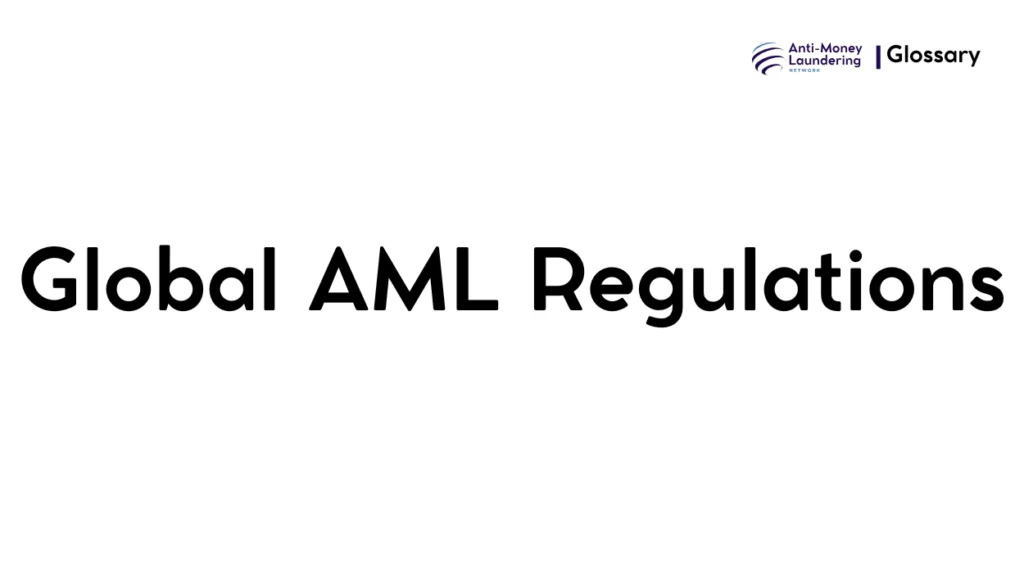Definition
Global AML Regulations refer to the collection of international standards, national laws, and regulatory frameworks designed to prevent, detect, and combat money laundering and terrorist financing worldwide. These regulations require financial institutions and other regulated entities to implement controls and procedures to identify illicit financial activities and report suspicious transactions.
Purpose and Regulatory Basis
The primary purpose of Global AML Regulations is to safeguard the integrity of financial systems by preventing criminals from disguising illegally obtained funds as legitimate income. These regulations help protect economies against the destabilizing effects of money laundering, terrorism financing, and related financial crimes.
Key regulatory foundations include:
- Financial Action Task Force (FATF): An intergovernmental body that sets global AML standards through its 40 Recommendations, guiding national laws and policies.
- USA PATRIOT Act: U.S. legislation enhancing AML efforts, mandating due diligence and suspicious activity reporting among U.S.-based financial institutions.
- European Union Anti-Money Laundering Directives (AMLDs): EU-wide frameworks harmonizing AML requirements for member states, including customer due diligence and transaction monitoring mandates.
When and How it Applies
Global AML Regulations apply whenever financial transactions cross jurisdictions or involve regulated entities subject to compliance mandates. Examples include:
- Opening or managing bank accounts
- Transferring large or suspicious funds
- Corporate and trust services
- Trade finance and commodities trading
Institutions must apply AML controls during customer onboarding, ongoing relationship management, and transaction monitoring to detect potential money laundering risks and file suspicious activity reports (SARs) as needed.
Types or Variants
Global AML regulations vary by region but commonly share core elements:
- Customer Due Diligence (CDD) and Know Your Customer (KYC): Verification of customer identity and risk profiling.
- Enhanced Due Diligence (EDD): Additional scrutiny for high-risk customers or transactions.
- Transaction Monitoring: Automated and manual systems to flag unusual activity.
- Suspicious Activity Reporting: Obligations to report potential money laundering to authorities.
Variants include specific national laws such as the Bank Secrecy Act (USA), MLR 2017 (UK), and directives adapted by jurisdictions to meet FATF guidelines.
Procedures and Implementation
To comply, institutions establish AML compliance programs consisting of:
- Risk Assessment: Identifying money laundering risks associated with products, customers, and geographies.
- Policies and Controls: Documented AML policies aligning with regulatory requirements.
- Customer Identification: Robust identity verification and due diligence measures at onboarding.
- Transaction Monitoring: Continuous surveillance to detect suspicious activities.
- Employee Training: Regular AML awareness and procedural training.
- Independent Testing: Periodic audits or reviews of AML programs.
- Reporting: Timely filing of SARs and maintaining records per regulatory timeframes.
Impact on Customers/Clients
From a customer perspective, AML regulations entail:
- Verification of identity and beneficial ownership
- Disclosure of source of funds when requested
- Potential delays or rejection of transactions flagged as high-risk
- Protection through secure handling of personal data
These measures ensure legitimate customers are distinguished from those involved in illicit activities, balancing regulatory obligations with customer rights.
Duration, Review, and Resolution
AML obligations are ongoing throughout the lifecycle of a customer relationship. Regular reviews and updates of customer information and risk profiles are mandated to reflect any changes.
Institutions must retain AML records for prescribed durations (often 5-7 years) and review their AML programs periodically to adapt to emerging risks and regulatory updates.
Reporting and Compliance Duties
Institutions are responsible for:
- Implementing and maintaining AML policies
- Reporting suspicious transactions promptly to financial intelligence units (FIUs)
- Maintaining thorough documentation
- Cooperating with regulatory examinations and investigations
- Facing penalties, including fines and reputational damage, for non-compliance
Related AML Terms
Global AML Regulations closely interlink with concepts such as:
- Know Your Customer (KYC): Customer verification processes.
- Suspicious Activity Reports (SARs): Documents filed to alert authorities.
- Beneficial Ownership: Identifying individuals who ultimately own or control accounts/entities.
- Politically Exposed Persons (PEPs): High-risk individuals subject to enhanced scrutiny.
Challenges and Best Practices
Common challenges include:
- Divergence in regulations across jurisdictions
- Complexity of beneficial ownership identification
- False positives in transaction monitoring
- Balancing customer experience with compliance
Best practices recommend leveraging technology for risk assessment, adopting a risk-based approach, continuous staff training, and proactive regulatory engagement to stay ahead of evolving threats.
Recent Developments
Recent trends in Global AML Regulations include:
- Increased focus on beneficial ownership transparency
- Integration of Artificial Intelligence and machine learning in transaction monitoring
- Strengthening of cross-border cooperation among regulators
- Updates such as the EU’s 6th AML Directive enhancing criminal liability and cooperation.
Global AML Regulations form the backbone of international efforts to combat financial crimes. By imposing comprehensive requirements on institutions to know their customers, monitor transactions, and report suspicious activity, these regulations maintain the integrity of financial systems worldwide. Staying compliant not only mitigates risks and penalties but also supports global economic stability and security.

